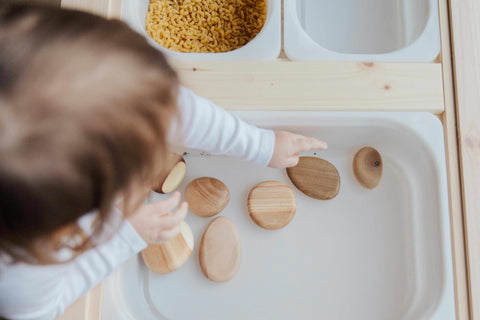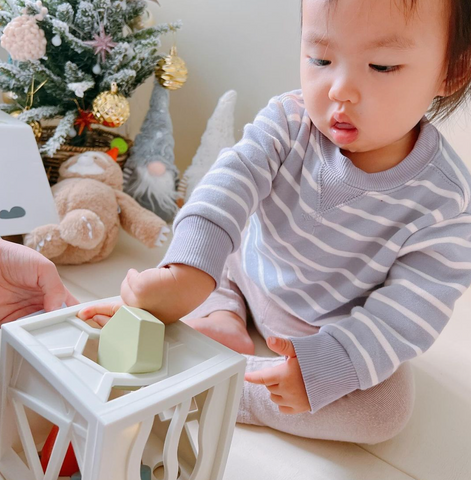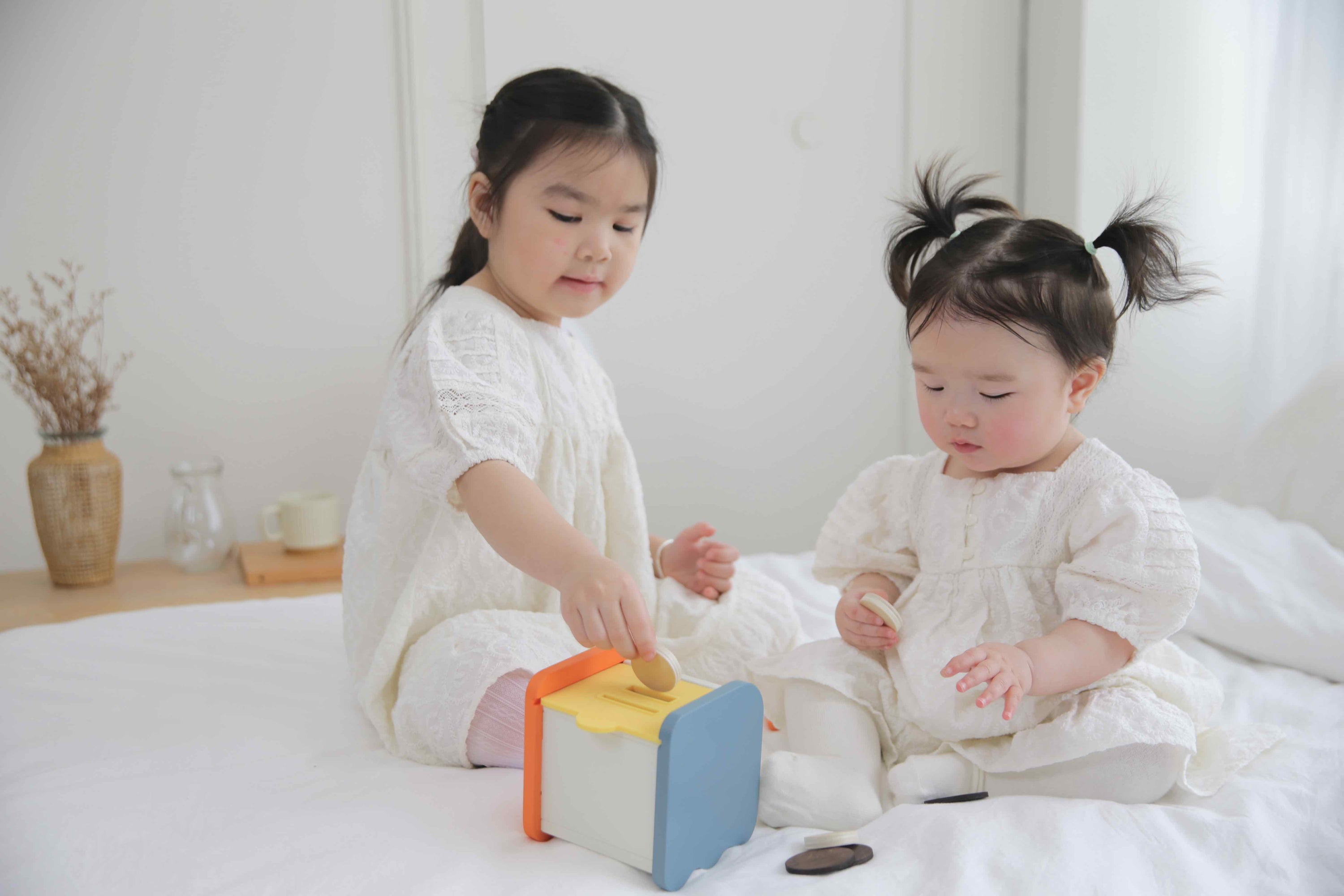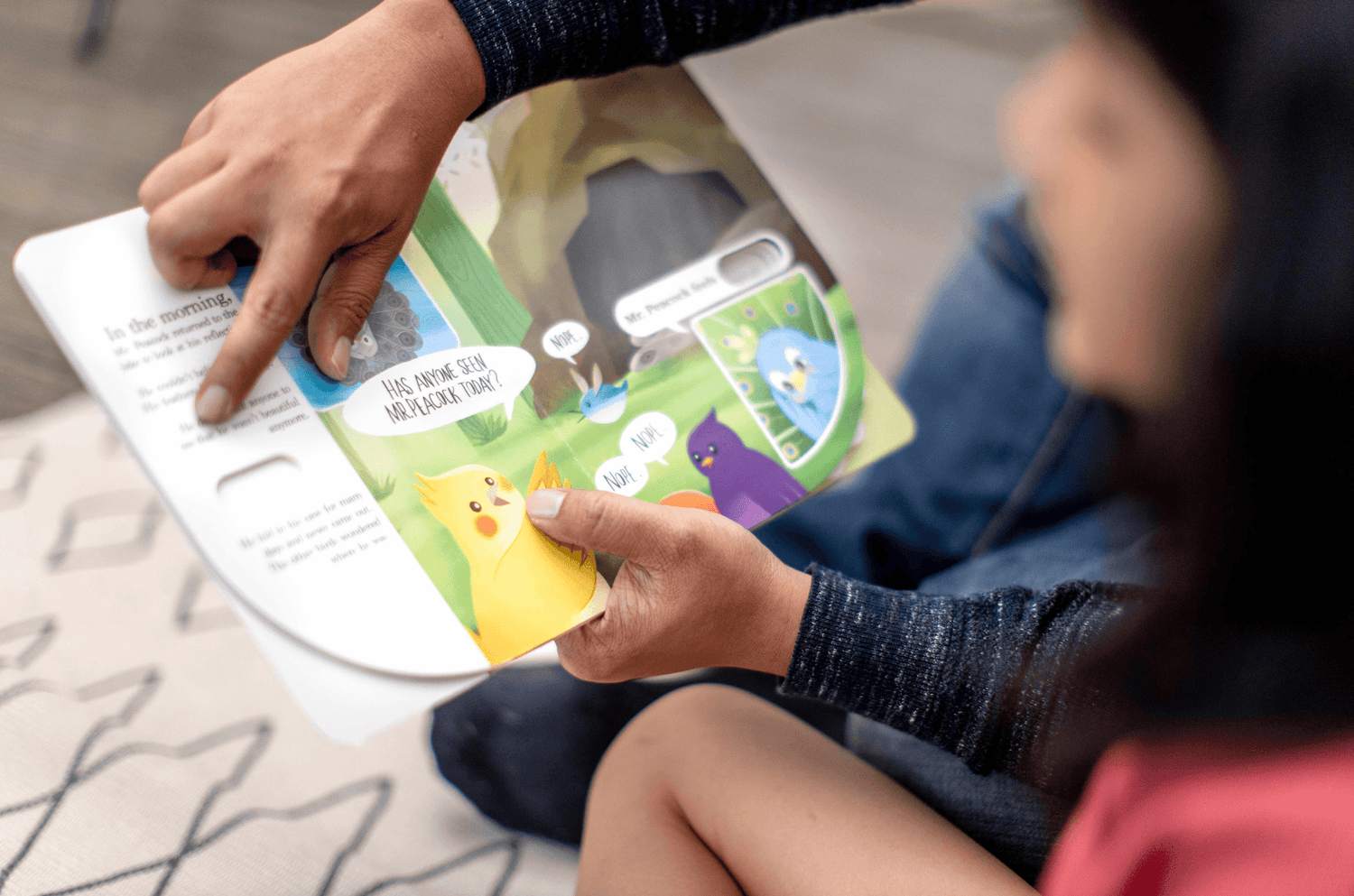‘Montessori’ is a buzzword that is often used when talking about early childhood education and toys, but what does it actually mean? What makes one toy more ‘Montessori’ than another? Are they actually better for a baby’s development? What are some Montessori toys you should buy that are actually useful? This article takes a deep dive into Montessori education and toys to see what all the buzz is about.
What is Montessori education?
The Montessori approach is an educational philosophy developed by Maria Montessori that emphasizes independent exploration and hands-on learning. The approach focuses on fostering a child's natural curiosity through playing and discovering. Montessori classrooms are designed to provide a ‘prepared environment’, meaning that it facilitates learning by allowing children to learn what they are ready to learn. Teachers act as guides, observing and supporting each child's unique development. The Montessori approach values individuality and emphasizes the holistic development of a child's cognitive, social, emotional, language, and physical abilities.
What are Montessori toys?

Montessori toys are educational materials that promote learning by encouraging kids to experiment. There are a few key defining features of a Montessori toy:
- Simple design. Montessori toys usually boil the toy down to its simplest form, allowing children to use their imagination as they play.
- Developmentally appropriate. Montessori education and toys emphasize specific developmental goals that children can reach through play and exploration. For example, a shape puzzle is used for learning shapes and practicing fine-motor skills.
- Open-ended. Many Montessori toys are left open-ended so that children are not constrained when they play. A good example of an open-ended toy is building blocks.
- Natural materials. The Montessori Approach emphasizes the use of natural materials so that children can connect with the natural world, while engaging in sensory play.
- Interactive and hands-on. It is important that Montessori toys can be held and manipulated in a hands-on way, as it allows children to explore and develop fine-motor skills.
Pros and cons of Montessori toys
Montessori toys, like any other toys, have their own pros and cons. Being aware of them can help you make a more informed decision before making a purchase.
Pros of Montessori toys
- Learn-through-play. Montessori toys are, by nature, educational, as they emphasize specific developmental objectives. They truly embody the meaning of ‘learn-through-play’.
- Self-directed learning. Montessori toys empower children to make choices and take ownership of their learning, promoting self-confidence and autonomy.
- Holistic development. Montessori toys focus on various developmental areas, including fine motor skills, problem-solving, creativity, and cognitive abilities.
- Screen-free. Since the Montessori approach emphasizes hands-on play, Montessori toys often don’t use screens or electronics.
Cons of Montessori toys
- Cost. Montessori toys often cost more than traditional plastic toys, since they use natural materials and are branded as ‘Montessori’.
- Age limitations. Some Montessori toys may be more suitable for specific age ranges, limiting their usability as children grow older.
- Design limitations. To adhere to Montessori principles, many Montessori toys are limited in terms of what form they can take and what materials they can be made from.
Best Montessori toys for 0 to 1 year olds

High-contrast visual mobiles
Newborns enjoy looking at high-contrast images. Black and white mobiles hanging above the crib or play gym stimulate visual development and train infants to focus their eyes.
Hands-on sensory toys
Infants love exploring using their hands and mouth. Sensory toys that are made from safe materials like wood and fabric are great for sensory stimulation and teething.
Object permanence toys
Object permanence is the concept that objects still exist even when they cannot be seen. This is something infants learn at around 6 months of age. Toys that allow infants to hide and find objects are great for teaching this concept.
Soft balls
Balls of various textures and sizes are a favorite for infants. They will enjoy seeing the ball roll and move in different ways. They will also enjoy feeling the different textures on the ball.
Stacking and nesting toys
Simple stacking toys allow children to practice their hand-eye coordination and fine-motor skills. After mastering stacking, children will love nesting - putting smaller objects into bigger objects.
Fine-motor puzzles
Children learn to grasp in three general stages - Palmar grasp, inferior pincer grasp, and superior pincer grasp. Montessori fine-motor puzzles are a great way to practice each type of grasp.
Best Montessori toys for 1 to 2 year olds

Shape sorters
Besides teaching shapes, shape sorters are great for teaching concepts like ‘containment’ and trial-and-error. Shape sorters come in a variety of materials and designs, though our favorites are the ones without all the flashing lights and noises.
Busy books and busy boards
Busy toys are not only great for keeping children occupied, they also offer opportunities for practicing fine-motor and problem solving skills. Busy books are perfect for taking on the go, while bigger busy boards are great for playing at home whenever you need some ‘me time’.
Pull toys
As your child learns to walk independently, they will enjoy pulling a toy behind them. This is great for practicing their coordination and balance. Pull toys come in all shapes and sizes, and often have additional functions too.
Musical instruments
Child-friendly instruments like little drums, rattles, tambourines, castanets and so on are great for hands-on exploration and musical play. Montessori instruments are made from natural materials like wood, not the ones that light up and play music.
Final verdict
The Montessori approach has been around for more than 100 years and it’s clear that there are plenty of reasons why parents choose Montessori education and toys. Montessori-branded toys have their fair share of pros and cons. Even though they may come at a higher price tag, they also often use better quality natural materials, and are more educational and age-appropriate. If you’re not sure where to start, our Baby Kits are a good option to get baby and toddler play essentials that blend the Montessori approach with current research in child development. You can also rest assured that each toy is safety-tested according to strict international safety standards.



